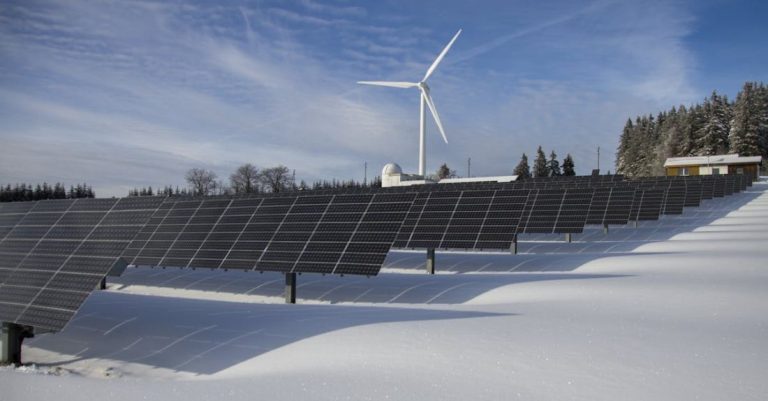
With the growing concern over climate change and the need to reduce our reliance on fossil fuels, the renewable energy sector has been experiencing rapid advancements in technology. As we look towards the future, it is essential to explore the latest trends in renewable energy technology that are shaping the way we harness and utilize clean energy sources.
Innovations in Solar Power
Solar power has been a key player in the renewable energy sector, and advancements in solar technology continue to drive the industry forward. One of the most significant trends in solar power is the development of more efficient solar panels. Researchers are constantly working on improving the efficiency of solar cells to enhance energy production and reduce costs. In addition to efficiency improvements, innovations such as transparent solar panels and solar paint are emerging as new ways to integrate solar power into buildings and infrastructure seamlessly.
The Rise of Wind Energy
Wind energy is another renewable energy source that is gaining momentum, thanks to advancements in technology. One of the key trends in wind energy is the development of larger and more efficient wind turbines. By increasing the size of wind turbines, developers can generate more electricity with fewer turbines, making wind energy more cost-effective and scalable. Additionally, innovations in vertical axis wind turbines and offshore wind farms are expanding the potential for wind energy production in various environments.
The Promise of Energy Storage
Energy storage is a crucial component of the renewable energy ecosystem, enabling us to store excess energy generated during peak production times for use during periods of high demand or low production. One of the most exciting trends in energy storage is the development of advanced battery technologies, such as lithium-ion batteries and flow batteries. These technologies offer high energy density, fast charging capabilities, and long cycle life, making them ideal for storing renewable energy efficiently.
Grid Modernization and Smart Technologies
As we transition to a more renewable energy-centric power grid, grid modernization and the integration of smart technologies are becoming increasingly important. Smart grid technologies enable real-time monitoring and control of energy flow, optimizing energy distribution and grid stability. Additionally, advancements in digitalization, artificial intelligence, and predictive analytics are transforming the way we manage and operate the grid, improving efficiency and reliability.
Hydrogen as a Clean Energy Carrier
Hydrogen is emerging as a promising clean energy carrier that can play a significant role in decarbonizing various sectors, such as transportation and industry. One of the key trends in hydrogen technology is the development of green hydrogen production methods using renewable energy sources, such as solar and wind power. Green hydrogen offers a clean and sustainable alternative to traditional hydrogen production methods, which rely on fossil fuels.
The Potential of Geothermal Energy
Geothermal energy is a renewable energy source that harnesses the heat stored beneath the Earth’s surface to generate electricity and heat buildings. Recent advancements in geothermal technology, such as enhanced geothermal systems and geothermal heat pumps, are expanding the potential for geothermal energy production. By tapping into the Earth’s natural heat reservoirs, geothermal energy offers a reliable and constant source of clean energy.
Innovative Bioenergy Solutions
Bioenergy, derived from organic materials such as biomass and biofuels, is another renewable energy source that is seeing innovative developments. One of the key trends in bioenergy is the use of advanced biofuels, such as cellulosic ethanol and algae-based biofuels, which offer higher energy yields and lower greenhouse gas emissions compared to traditional biofuels. Additionally, bioenergy combined with carbon capture and storage technologies can help reduce carbon emissions from bioenergy production processes.
Empowering Communities with Microgrids
Microgrids are small-scale, localized energy systems that can operate independently or in conjunction with the main power grid. One of the emerging trends in renewable energy technology is the deployment of microgrids to empower communities with reliable and resilient energy solutions. By integrating renewable energy sources, energy storage, and smart grid technologies, microgrids can enhance energy security, reduce costs, and support the transition to a more sustainable energy future.
In Conclusion
The future of renewable energy technology is bright, with advancements in solar power, wind energy, energy storage, grid modernization, hydrogen technology, geothermal energy, bioenergy, and microgrids shaping the way we generate, store, and distribute clean energy. By harnessing these innovative technologies and trends, we can accelerate the transition to a more sustainable and renewable energy landscape, reducing our carbon footprint and mitigating the impacts of climate change. As we continue to invest in research and development, the possibilities for renewable energy technology are limitless, offering a brighter and greener future for generations to come.





